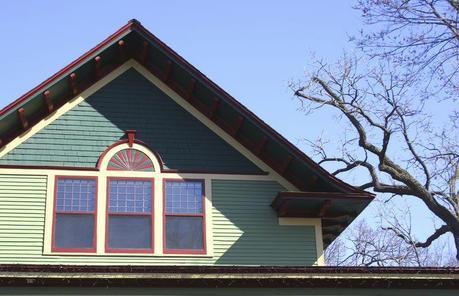We’re all familiar with the Better Call Saul-type commercials on TV, the ones that talk about the risk of mesothelioma and send you straight to WebMD to check the slightest symptoms of cold or flu. There’s no doubt that asbestos is a concern most homeowners should be cognizant of; however, it’s important to keep the risk in perspective.
According to the Minnesota Department of Health, “Asbestos is a naturally occurring mineral fiber mined from the earth. It is heat and chemical resistant, and is easily formed into just about any shape or product. It was used in more than 3,000 different construction materials and manufactured products, including many found in homes.” Generally speaking, asbestos-containing materials are not dangerous if in good condition and the fibers remain contained; when these materials begin to deteriorate or break, they become a risk to human health.

Asbestos was commonly used in siding, roofing, and insulation materials.
Asbestos products can break down into fibers up to 1,200 times thinner than a human hair. If these fibers, which can easily become airborne, are inhaled, they may become embedded in lung tissue and can potentially cause mesothelioma, lung cancer and asbestosis. Unlike some chemicals and certain substances, there's no known safe level of asbestos exposure, with problems arising 10 to 30 years after the initial exposure.
While new uses of asbestos cannot be developed, somewhat surprisingly, asbestos has not been banned outside of the following products:
- Spray-applied material.
- Pipe insulation
- Boilers and hot water tank insulation
- Various paper and sheet products
Because so many home-construction materials contain(ed) asbestos, its presence in most homes is ubiquitous in materials ranging from adhesives, chimney flue lining, and electrical products to wall and attic insulation, caulking and window glazing. Some of the most common applications include vinyl asbestos floor tile, and asbestos cement roofing, shingles and siding. With the exception of siding, MLS data sheets rarely disclose that a home contains asbestos, sometimes because the homeowner may not know him- or herself.
If you’re considering buying, or are already in a home with materials you suspect contain asbestos, ultimately the best course of action is none at all. The U.S. Consumer Product Safety Commission advises,
The danger is that asbestos materials may become damaged over time. Damaged asbestos may release asbestos fibers and become a health hazard…
THE BEST THING TO DO WITH ASBESTOS MATERIAL IN GOOD CONDITION IS TO LEAVE IT ALONE! Disturbing it may create a health hazard where none existed before. the mere presence of asbestos in a home or a building is not hazardous.
If the asbestos-containing material is not in good condition, it can be “repaired” through a process called encapsulation, or carefully and safely removed—preferably by a Minnesota-licensed asbestos contractor.
To learn more about asbestos in the home, visit these sites:
- Minnesota Department of Health, Asbestos in Minnesota Homes
- United States Consumer Products Safety Commission, Asbestos in the Home
Angela Anderson, 612-396-3654
Realtor, Results Support Services: EMAIL — BIO
Licensed Associate Working with Sharlene Hensrud of RE/MAX Results, and HomesMSP — Sharlene, John, Angela

